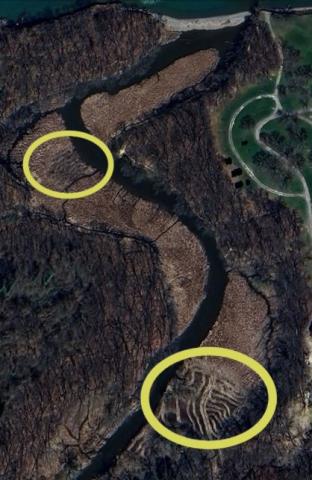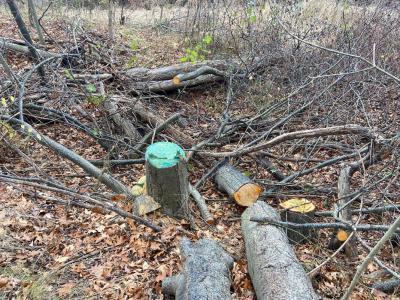New York State’s Four Mile Creek State Park, on the southwestern shore of Lake Ontario includes a 20.2-acre high quality coastal wetland at the mouth of Four Mile Creek. The New York State Department of State designated the wetland as a Significant Coastal Fish and Wildlife Habitat site due to its lack of disturbance, deep aquatic beds, emergent marsh, and open water.
The habitat creates thriving warm fisheries and excellent wildlife habitat for many species including the least bittern, a U.S. Fish and Wildlife Service "Bird of Conservation Concern” and a threatened species in New York State. The wetland is dominated by native aquatic vegetation with only a recent presence of non-native invasive plant species in small areas. With the help of an Environmental Protection Agency grant through the Great Lakes Restoration Initiative (GLRI), New York State Office of Parks, Recreation and Historic Preservation is leading a project focused on controlling those invasive species while including wetland restoration and habitat enhancements.
In 2023, an area of a little more than 1.87 acres was treated with an aquatic approved herbicide to treat the invasive species common reed, Phragmites australis. In 2024, approximately 10,000 sq. feet of the same area was retreated. Also in 2023 and 2024, approximately 3.32 acres of the state park was treated to address six other invasive species. Those invasive species include hand pulling of European frog-bit, which is a floating aquatic plant, herbicide application for flowering rush, and cutting followed by cut-stump herbicide treatment of woody invasive species at the edge of the wetland (European black alder, Japanese barberry, common and glossy buckhorn). In total, approximately 5.19 acres were treated to address all seven species in the past two years and follow-up treatments over the same areas are expected to occur in 2025 and 2026. Restoration plantings of native wetland vegetation will also be completed in 2025 and 2026. Habitat enhancements such as woody debris additions and installation of nesting structure are also planned.



